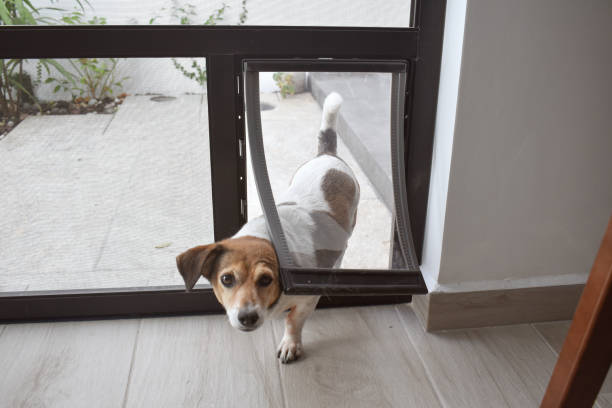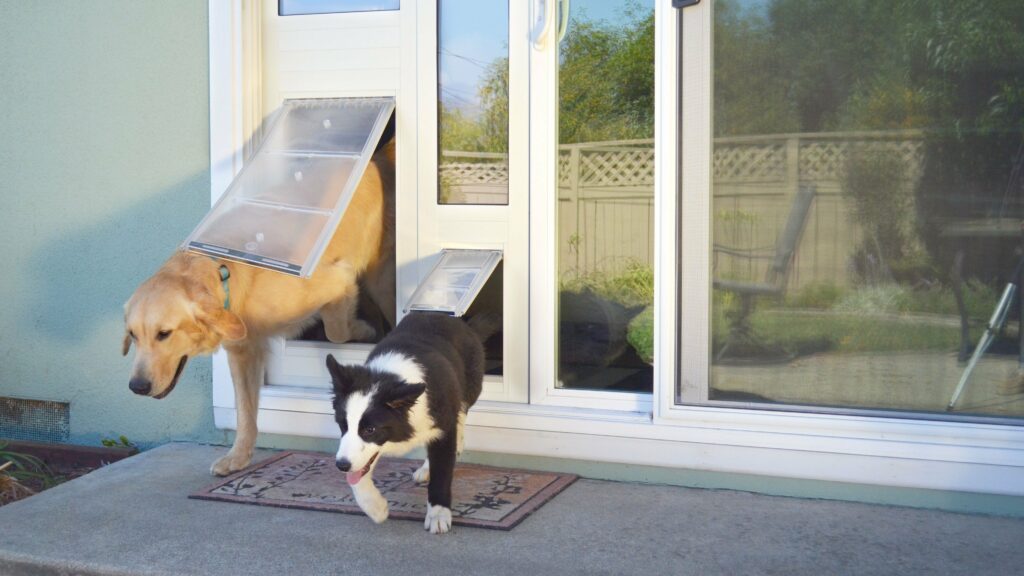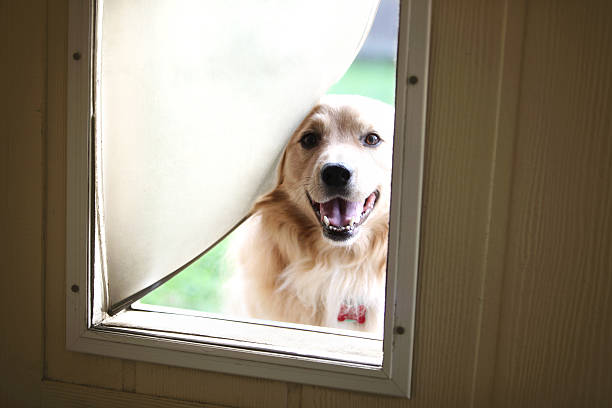
The Pros and Cons of Dog Doors: Is It Right for Your Home?
Dog doors can be a fantastic addition to your home, offering convenience and freedom for both you and your furry friend. However, they also come with their own set of challenges. Here’s a comprehensive look at the pros and cons of installing a dog door, helping you decide if it’s the right choice for your household.
Pros of Dog Doors
1. Increased Freedom for Your Dog
Independence: Your dog can go outside to play, exercise, or relieve themselves whenever they want, without waiting for you to let them out.
Reduced Stress: Dogs that can come and go as they please are often less anxious and more content.

2. Convenience for Pet Owners
Time-Saving: No more constant trips to the door to let your dog in and out. This is especially beneficial for busy pet owners.
Flexibility: Whether you’re at work, asleep, or simply out for a while, your dog can maintain their outdoor routine.
3. House Cleanliness
Fewer Accidents: With easy access to the outdoors, the likelihood of indoor accidents decreases, keeping your home cleaner.
Reduced Damage: Dogs that can relieve themselves outside are less likely to scratch doors or floors out of frustration.

4. Health Benefits
Exercise: Regular outdoor access encourages more physical activity, contributing to a healthier lifestyle for your dog.
Sunlight and Fresh Air: Exposure to natural elements is beneficial for your dog’s mental and physical well-being.
Cons of Dog Doors
1. Security Concerns
Intruder Risk: Some dog doors are large enough for a person to fit through, potentially compromising your home’s security.
Wildlife Entry: Unwanted animals, such as raccoons or stray cats, might use the dog door to enter your home.
2. Energy Efficiency
Heat Loss: Dog doors can be a source of drafts, leading to increased heating and cooling costs.
Weather Exposure: Depending on the design, some dog doors might not be as weatherproof as your main doors.

3. Training and Behavior
Training Required: Dogs need to be trained to use the door properly, which can take time and patience.
Unwanted Behavior: Without supervision, dogs might bring in mud, leaves, or even critters from outside.
4. Installation Challenges
Cost and Effort: Installing a dog door can be an investment in both time and money. Professional installation might be necessary for certain types of doors.
Aesthetic Impact: Dog doors can alter the appearance of your home, and some might not fit seamlessly with your decor.
Conclusion
Dog doors can be a game-changer for both you and your pet, offering unparalleled convenience and freedom. However, it’s crucial to weigh the benefits against the potential drawbacks, considering factors such as security, energy efficiency, and your dog’s behavior. By carefully evaluating these aspects, you can make an informed decision that best suits your lifestyle and keeps your furry friend happy and safe.

About the Author:
Savanna Westwood
Savanna Westwood is the Owner and Founder of The Savvy Sitter, Pet Sitting and Dog Walking, LLC. She has grown up with animals all her life and enjoys spending time with them. Savanna has lived in the Winter Garden and Windermere Area for over 30 years. When she is not taking care of Fur Friends, one can find her reading, practicing archery, riding, and devising ways to provide additional and excellent services to clients. Savanna is a Certified Professional Pet Sitter with Pet Sitter International's CPPS certification and also holds certification in Pet First Aid and CPCR for Pet-Care Professionals.

